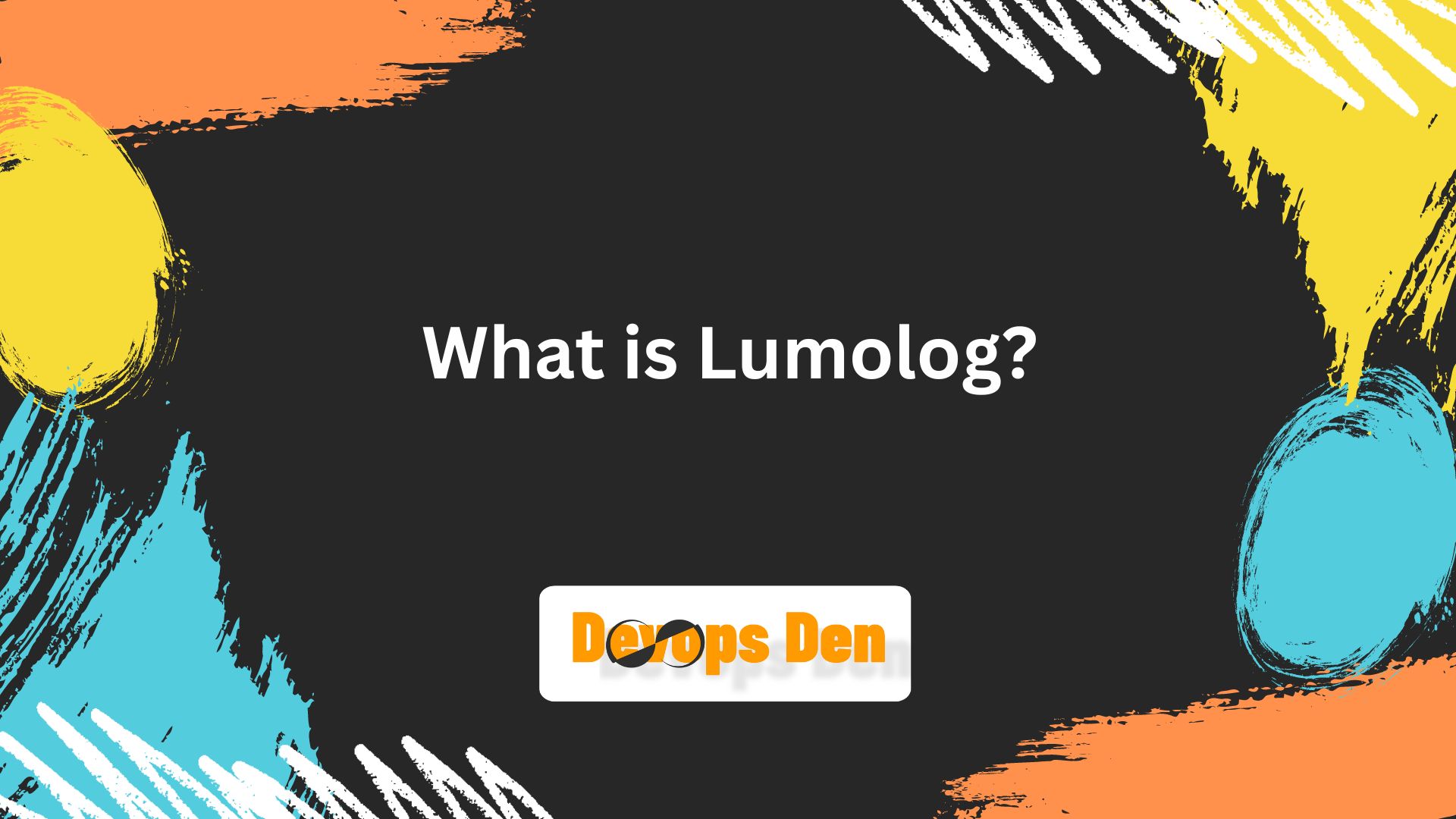What is Lumolog?
 Devops Den
Devops Den
In a world increasingly driven by innovation and digital transformation, technologies that enhance data tracking, analysis, and integration are essential for businesses and individuals alike. One emerging term in this space is Lumolog. While still relatively new and not yet a household name, Lumolog holds great promise for transforming how we understand and interact with our data environments. But what exactly is Lumolog, and why should we be paying attention to it?
Introduction
At its core, Lumolog is a cutting-edge data logging and monitoring system designed to capture, store, and analyze a wide range of data streams. The "Lumo" aspect of its name suggests light or clarity, signaling Lumolog’s mission to bring transparency and insight to complex data ecosystems. Whether it's used for tracking environmental metrics, managing network infrastructures, or ensuring compliance with specific regulations, Lumolog offers a versatile platform for data capture and interpretation.
Lumolog excels at logging real-time data and facilitating long-term trend analysis, making it ideal for businesses in industries like manufacturing, IoT (Internet of Things), healthcare, and energy. Its unique ability to consolidate large amounts of data from various sources into a centralized, accessible platform is what sets it apart from traditional data logging solutions.
Explore About Cloud Computing with Lumolog
Key Features of Lumolog
Real-Time Data Logging
- Lumolog provides real-time data collection from a wide variety of inputs, from sensors to software systems. This makes it invaluable for applications that require immediate feedback, such as monitoring industrial machinery or tracking environmental conditions.
Scalability
- As businesses grow and their data needs expand, Lumolog is built to scale. Whether you're logging data from a single sensor or thousands of devices, Lumolog's infrastructure can handle the load without a dip in performance.
Customizable Dashboards
- A key feature of Lumolog is its highly customizable user interface, which allows users to build personalized dashboards to visualize the most critical data points. This is particularly useful for teams that require different insights from the same data sets, such as engineers versus compliance officers.
Data Security
- In today's digital landscape, data security is more important than ever. Lumolog employs advanced encryption protocols and security features to ensure that sensitive information remains protected, whether in transit or at rest.
Integration with AI and Machine Learning
- One of Lumolog’s standout capabilities is its seamless integration with AI and machine learning systems. By combining raw data logging with advanced analytics, Lumolog can help businesses uncover predictive insights, optimize operations, and even automate certain processes based on the logged data.
Why is Lumolog Important?
Data is increasingly being described as the "new oil"—an invaluable resource that drives the modern economy. However, raw data alone is of little use without the proper tools to extract meaning and value from it. Lumolog serves as one of these essential tools, transforming raw, chaotic data streams into actionable insights.
For industries such as manufacturing, Lumolog can help monitor equipment health, detect faults before they occur, and streamline maintenance operations. In IoT environments, Lumolog acts as a critical intermediary, collecting and analyzing data from smart devices to optimize performance and usability. Even in healthcare, where accurate, real-time data is vital for patient care, Lumolog has the potential to enhance monitoring systems and improve outcomes.
Use Cases of Lumolog
Manufacturing
- By logging data from machinery, Lumolog helps manufacturers track production lines, identify inefficiencies, and reduce downtime through predictive maintenance.
Energy Sector
- In energy management, Lumolog can be used to monitor power grids, track renewable energy sources, and optimize energy consumption based on real-time data inputs.
Smart Cities
- As urban areas adopt smart technologies, Lumolog plays a role in gathering data from sensors that monitor traffic, air quality, and energy usage. This allows for more informed decisions on how to improve city infrastructure and sustainability.
Healthcare
- Lumolog’s real-time monitoring capabilities can be leveraged in hospitals to track vital signs, manage patient records, and optimize hospital resource allocation.
The Future of Lumolog
As the world becomes more connected and data-driven, technologies like Lumolog will continue to play a critical role in shaping the future. With its scalable, secure, and AI-ready platform, Lumolog is poised to revolutionize how industries handle data, providing enhanced insights and operational efficiencies.
While still an emerging technology, Lumolog’s potential applications are vast, and we can expect to see more businesses integrating this powerful system into their workflows in the years to come.
Conclusion
Lumolog is more than just a data logger; it’s a comprehensive platform designed to transform how organizations approach data collection, storage, and analysis. With its wide range of features, Lumolog is set to become an indispensable tool in sectors ranging from manufacturing to healthcare, offering real-time insights that can drive more informed decision-making and streamline operations. As we continue to embrace a data-centric future, technologies like Lumolog will play an increasingly important role in ensuring that businesses remain agile, secure, and ahead of the curve.
Subscribe to my newsletter
Read articles from Devops Den directly inside your inbox. Subscribe to the newsletter, and don't miss out.
Written by

Devops Den
Devops Den
Whether you're a seasoned DevOps professional or just starting your journey, we're here to support you with expert insights, practical guides, and valuable tools to help you succeed in the world of DevOps